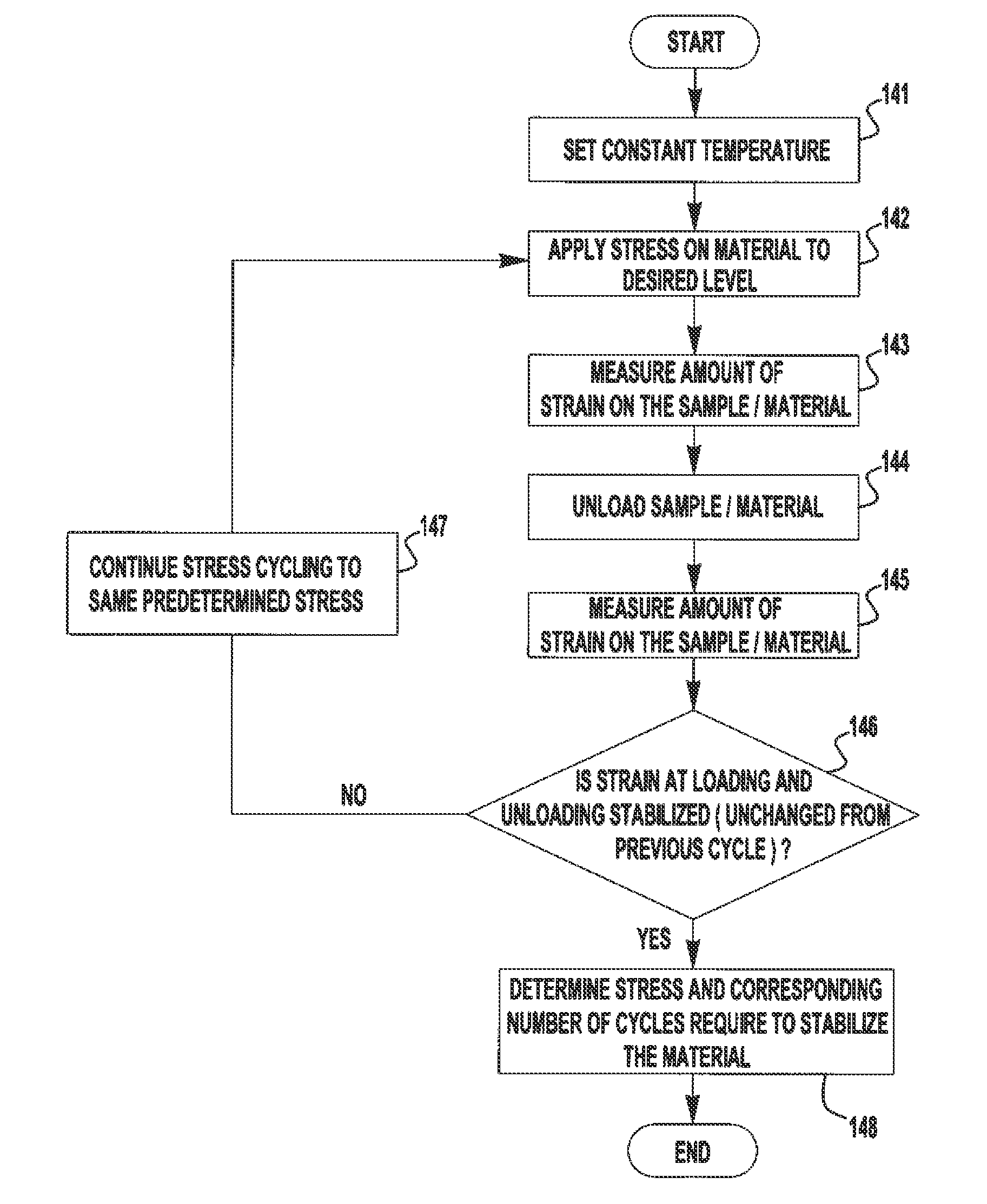Mechanical Components From Highly Recoverable, Low Apparent Modulus Materials
a technology of apparent modulus and mechanical components, applied in heat treatment process control, manufacturing tools, heat treatment apparatus, etc., can solve the problems of bearing and gear corrosion problems, flight and water vehicles exposed to marine environments are also prone to corrosion related failures, and no currently deployed material possesses all these properties, so as to eliminate irrecoverable deformation
- Summary
- Abstract
- Description
- Claims
- Application Information
AI Technical Summary
Benefits of technology
Problems solved by technology
Method used
Image
Examples
Embodiment Construction
[0028]The present invention is directed to a method to design mechanical components and mechanisms (bearings, gears, drives, actuators, etc.) using advanced materials that simultaneously possess high required levels of strength and hardness while exhibiting extraordinarily high levels of recoverable strain due to a solid-state phase transformation that occurs when the material is stressed. When these materials are processed in accordance with the principles of the present invention, they are not subject to permanent damage of the contacting surfaces due to excessive shock loads and other forces. The advanced materials selected and engineered to exhibit these qualities are not only ultra-hard, lightweight and wear resistant but possess the exceptional ability to recover large deformations without exhibiting permanent strain damage. When materials with such properties are used in a highly loaded contact application, they resist permanent contact stress damage such as denting, due to o...
PUM
| Property | Measurement | Unit |
|---|---|---|
| Fraction | aaaaa | aaaaa |
| Fraction | aaaaa | aaaaa |
| Pressure | aaaaa | aaaaa |
Abstract
Description
Claims
Application Information
 Login to View More
Login to View More - R&D
- Intellectual Property
- Life Sciences
- Materials
- Tech Scout
- Unparalleled Data Quality
- Higher Quality Content
- 60% Fewer Hallucinations
Browse by: Latest US Patents, China's latest patents, Technical Efficacy Thesaurus, Application Domain, Technology Topic, Popular Technical Reports.
© 2025 PatSnap. All rights reserved.Legal|Privacy policy|Modern Slavery Act Transparency Statement|Sitemap|About US| Contact US: help@patsnap.com



